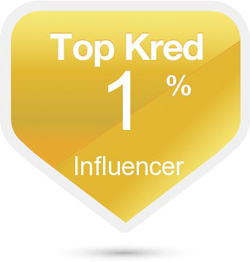Mari Johnson Brings Us Beautiful Losers at SXSW Premiere!!
Mari Johnson is a writer based in Texas who is a dear friend and much-respected colleague who did me a huge favor to cover the premiere of Beautiful Losers at SXSW in Austin , Texas.
This is her review. Read at the very end for my very brief comments!
Beautiful Losers, Directed by Aaron Rose and co-directed by Joshua Leonard
Premiere on Day 2 of SXSW, Austin, TX March 9, 2008

As I took my place in the Paramount Theatre, I couldn’t help overhearing the buzz of other audience members. No one knew what to expect from this documentary. Would it be angst-ridden? Tragic? You have to suffer to be an artist, right? Would we all leave depressed? Should I have brought my “Understand Modern Art Breath Spray (http://www.fridgedoor.com/unmoartbrsp.html)” with me?
Beautiful Losers, a documentary based on the book by Aaron Rose of the same name, takes a look at the lives and works Jo Jackson, Chris Johanson, Geoff McFetridge, Barry McGee (http://www.youtube.com/watch?v=X04lyGnngOQ), Stephen Powers II, Mike Mills, Margaret Kilgallen and other artists most famous for being self-taught or DIY-ers.

Before the movie started, Rose summed up the premise perfectly, “This film is also about growing up. Start from nothing, with no real plan, no direction, and build a whole world for yourself and for your friends.”
The focus of the documentary is almost constantly on the artists and their roots, but Aaron Rose, however reluctantly, has his share of screen time too. Rose’s scattered presence throughout the documentary serves to tie the pieces together. His directing style, according to both the film’s editor Lenny Mesina and Rose himself, was collaborative, and always has been. Group votes, changes on the fly, were all standard operating procedure throughout filming and editing. Every time the camera would turn to him for more than a few moments, he seemed to want to instantly redirect the attention off himself and on to someone else or to the art piece nearest him.

Shooting for Beautiful Losers began in the Fall of 2002 and over 400 hours of film would eventually be shot. All of that footage was crystallized into this window into the artists’ lives as they came together and tried to balance creative vision with market success. With so many hours to go through, editor Lenny Mesina said it was really tough to know when Beautiful Losers was actually done.
“We struggled with that. You can never really be done. There could be a sequel, man, there could be a trilogy. There so much more we could do. It is what it is now,” said Mesina during the Q&A session after the screening.
Beautiful Losers is about art and artists at the “street level,” make no mistake, however these artists are highly successful now, a fact that some of the artists at times seem slightly at odds with. Ed Templeton (http://www.youtube.com/watch?v=tbdhD_0IU_M) in particular, who was called a “Renaissance man of street culture” by Swindle magazine, seems a walking contradiction in terms. He’s a successful businessman, former professional skateboarder turned artist, living the American dream – but not by the rules laid down by art-school-establishment. He didn’t follow the process.
Each of the artist’s stories has its own strength and brings out not only the character of their work, but also their personality. Particularly moving are the sections of the film about the late Margaret Kilgallen (1967-2001), wife and collaborator of Barry McGee. Her scenes radiate off the screen and seem almost tranquil compared to the occasionally disjointed, gritty environment the rest of the film can exude. When she looks full on into the camera, the audience can’t help but be captivated by her gaze. Watching her paint was equally mesmerizing. One of the very best parts of the film was when she talked about the fallacy of seeking perfection in art.
Kilgallen said, for art21, on PBS.com, “I like things that are handmade and I like to see people’s hand in the world, anywhere in the world; it doesn’t matter to me where it is. And in my own work, I do everything by hand. I don’t project or use anything mechanical, because even though I do spend a lot of time trying to perfect my line work and my hand, my hand will always be imperfect because it’s human. And I think it’s the part that’s off that’s interesting, that even if I’m doing really big letters and I spend a lot of time going over the line and over the line and trying to make it straight, I’ll never be able to make it straight. From a distance it might look straight, but when you get close up, you can always see the line waver. And I think that’s where the beauty is.”
The beginning of the film features Harmony Korine’s story of the severed head of a notorious bookie being found at the children’s playground he’s currently being filmed in. The scene gains momentum as it goes on and the finish is twisted and hilarious. The audience roared with an almost unanimous hand-over-mouth giggle, “I can’t believe he just said that!” It’s also the perfect introduction to the raw, and yet painfully funny, contrast of art with the reality of its street culture roots.
Mike Mills’ humorous and often deadpan comments echo the sharp clarity of his artwork and graphic design. In an October 2007 interview, Mills said he had to leave the limited audience of the art world and, “subvert the normal, mainstream commercial world.” His self-deprecating remarks peppered throughout the film culminate in his warning not to trust anyone in a suit giving advice (he’s the only person wearing a suit through the entire film.)

The question and answer session from Aaron Rose reinforced the “you can really go out and do this yourself” feeling that pervaded the film. When Rose took the stage, he brought Lenny Mesina, Beautiful Losers’ editor with him to answer questions. Rose immediately looked more comfortable by not having to stand by himself, like a kid giving a presentation at the front of the class.
If the audience took away nothing else from the film that day, we took away the idea that we could start now, with whatever we had on hand at this moment, to make our mark on the world. Rose and Mesina said it best during the wrap up of the Q&A session:
What is your advice to the next generation starting out?
Aaron: Have shows in your garage. Invite your friends. Make magazines at [a copy store.] Don’t pay for it. Never have the goal be success. (From Lenny: Stick stickers on lamp posts and cover them with plastic wrap.) Just start.Beautiful Losers is beautifully inspiring, as it was surely meant to be. Audience members left the aisles with huge smiles on their faces and you could tell by the gleam in their eyes, they were looking for something to make.

http://www.beautifullosers.com
http://sidetrackfilms.com/films/beautiful_losers/
http://www.beautifullosers.it/index_ita.html INDEX of the artists.
I would like to thank Mari & Dennis Johnson for their coverage of this film premiere. I know they were so very generous with their time and willing to help me out.
For those who aren’t familiar with Mari Johnson, you will see more of her work on LA-Story in the future and you can find her work on Associated Content.
Stevie Wilson
Subscribe to RSS headline updates
Powered by FeedBurner
© 2007 KBP Inc.













